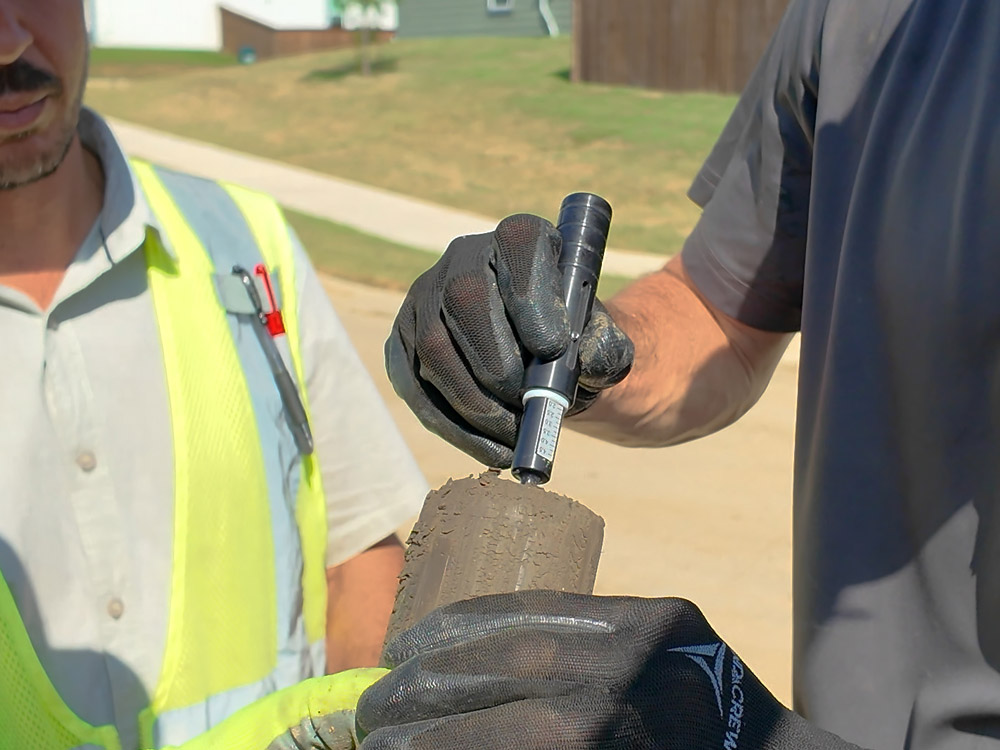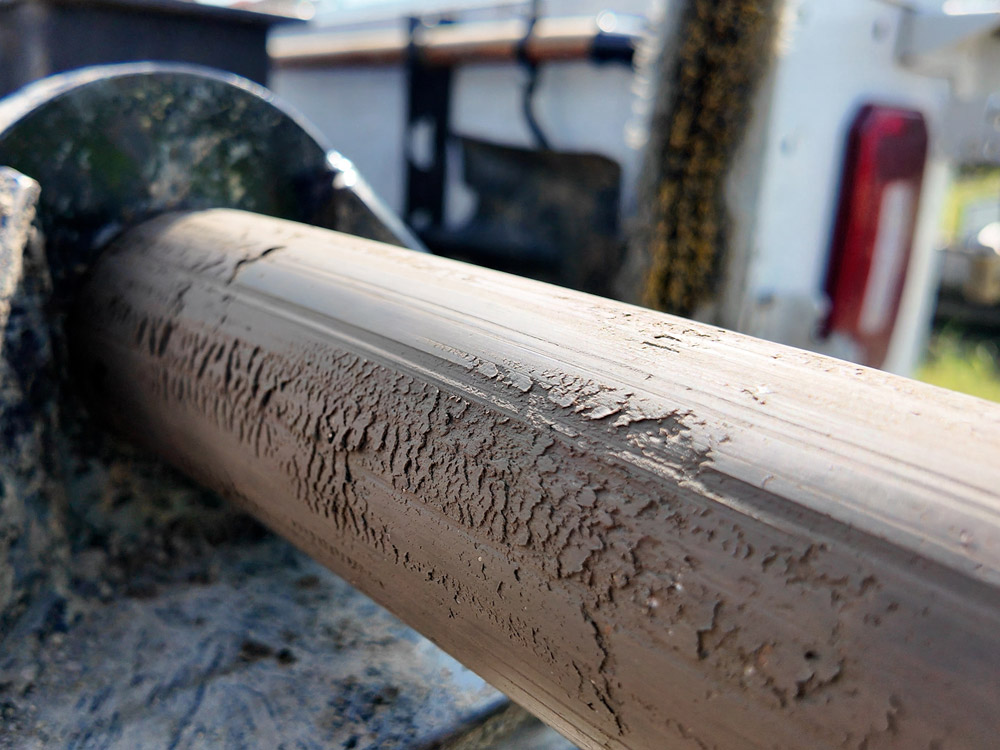Why Injection Depth Matters
Soil injection isn’t about putting solution in the ground at random. The depth of injection determines whether you’re actually stabilizing the expansive clay that causes movement. Get it wrong, and the soil underneath continues to swell and shrink, creating the cracks and failures builders spend years fixing.
What the Soil Report Actually Says
A geotechnical report (soil report) provides the roadmap. By drilling borings and testing samples, engineers reveal:
- Soil type (clay, sand, rock, or mixed layers)
- Potential Vertical Rise (PVR), the measurement of how much the soil will swell and shrink
- Depth of swell layers, often 10–15 feet below grade
This data tells you exactly how deep to inject. Some sites only require 10 feet. Others need 12 or 15 feet, depending on where the expansive clay sits. Builders who skip or misread this step often inject too shallow, leaving unstable soil untreated.

Real-World Proof of Depth
At ProChemical, we routinely see soil with 5%–7% natural swell in North Texas. That level of movement translates into 4–5 inches of foundation shift — enough to crack walls, distort slabs, and damage pools. By following the soil report and injecting to the recommended depth, we reduce movement to about 1% (1 inch or less).
The difference is visible on-site. After injection, the ground swells uniformly, proof that the clay has been neutralized and stabilized.
Why “One-Size-Fits-All” Doesn’t Work
Depth recommendations change not only from subdivision to subdivision but sometimes from lot to lot. One boring may show high-swell CH clay, while another boring just yards away reveals low-swell CL clay. Without the soil report, builders risk wasting money on unnecessary injection in some areas and missing critical depth in others.

What It Means for Homeowners
For homeowners, injection depth isn’t an engineering detail — it’s the difference between a solid foundation and years of costly repairs. When soil is stabilized to the correct depth:
- Wall and slab cracks are minimized
- Doors and windows stay square
- Driveways and pools stay intact
- Foundations perform as designed
Skipping soil modification or injecting too shallow guarantees problems will return with every wet/dry cycle.
The ProChemical Approach
Since 1992, ProChemical has partnered with geotechnical engineers, builders, and developers to ensure soil injection is done to the correct depth, every time. Our proprietary ion-exchange solution permanently alters the clay, stopping the swell-shrink cycle at its source.
